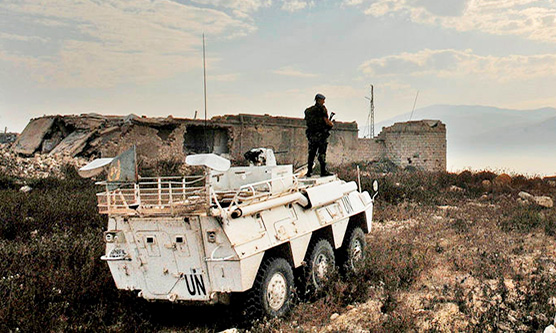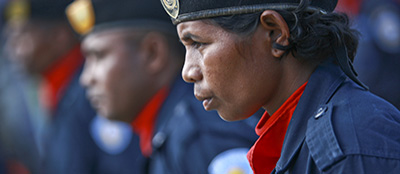The experience of various women and CVE programmes confirms that women can and do play a significant role in P/CVE - but they need to be supported and empowered to do so. Key lessons emerging from experience to date include the following: Need for gender mainstreaming: It is important to consult women and involve them in programme design and implementation, carry out ...» more
Conflict
Myanmar’s stabilisation challenges
The communities currently most at risk of, and affected by, conflict and violence are those living in the Kokang Self-Administered Zone and in other parts of northern Shan State. Other affected communities include those in Kachin, Rakhine, Chin and Kayin States. The community most affected by the threat of forced displacement is the Rohingya, a Muslim ethnic group, in Rakhine ...» more
Lessons from peace processes
Lesson learning has played an important role in advancing peace processes across the globe.1 Although no two conflicts are alike there are a number of wider lessons and practices that can be transferred to other peace processes. However, it is important to understand the differences and similarities in order to develop the lessons within the dynamics of the particular case ...» more
Transparency and accountability in fragile and conflict-affected settings
Over the past 10 years, there have been numerous meta-studies and syntheses of the impact and effectiveness of transparency and accountability initiatives (TAIs), many of which attempt to incrementally add value to the existing evidence base or offer new perspectives on existing conclusions. These studies are almost unanimous in their conclusion that little of practical or ...» more
Conflict and gender dynamics in Yemen
The current conflict in Yemen, which began in 2015, has resulted in a humanitarian catastrophe. As of March 2017, 18.8 million people are in need of humanitarian support, and 10.3 million are in acute need (Sikurajapathy and Al-Fotih, 2017). Women, men, boys and girls have been affected in different ways by the conflict. This rapid reviews looks at the impact of the conflict ...» more
Changes in economic activity during and after conflict
Conflict changes economic activity in a number of ways. This report looks at whether these changes in economic activity become entrenched after conflict has ended. The available evidence found within the scope of this report suggests that the extent to which changes in economic activity become entrenched after conflict depends on how developed a country was prior to conflict ...» more
Countering violent extremism
This Topic Guide introduces conceptual and practical approaches to violent extremism in different contexts, setting out what we know from the literature (English and Arabic). ...» more
Gender and conflict in the Western Balkans
Ethnic wars in the Western Balkans had a parallel in ‘gender wars’ – and both were instrumental in fostering competitive, conflictual and antagonistic perspectives of social relations (Hughson, 2012). This report provides a brief summary of gender relations and (in)equalities in the Western Balkans, in particular, how they have been influenced by the violent conflicts following ...» more
Economic drivers of conflict in the Western Balkans
This report looks at each of the six Western Balkans countries listed above, identifies the key economic challenges they face and assesses whether any of these are, or have the potential to become, drivers of conflict. The literature reviewed largely comprised reports from international development/finance organisations, notably the World Bank, IMF and European Commission, as ...» more
Sinai conflict analysis
The Sinai conflict has been underway since 2011 and has become progressively more intense and violent, fuelled by localised grievances as well as wider regional developments. The key actors involved are militant jihadist groups, local Bedouin tribes and the Egyptian government/military; others such as Israel, Gaza and the Multinational Forces and Observers have varying ...» more
Conflict analysis of Egypt
In 2011 Egypt experienced mass protests culminating in the fall of long serving president, Hosni Mubarak. The time in power of the country’s first democratically elected President, the Muslim Brotherhood’s Mohamed Morsi, was short-lived. He was deposed by Egypt’s military on 3 July 2013, following anti-government demonstrations. Abdul Fatah el-Sisi, former head of the armed ...» more
Cross-border conflict drivers and breaks – Pakistan, Afghanistan, Iran and Iraq
This report provides an overview of the evidence on cross-border conflict drivers and breaks along the Pakistan–Afghanistan–Iran–Iraq route. Direct evidence on the nature of conflict-related flows along this route in its entirety is limited. Therefore, this report includes evidence on crossborder conflict dynamics between neighbouring countries along the route. This report was ...» more
Gender and conflict in Ukraine
The conflicts in eastern and southern Ukraine constitute a significant humanitarian crisis for the country and the region, with at least 1.7 million internally displaced persons, two-thirds of whom are women (UNOCHA 2016, p. 7; UNHCR 2015, p. 5) and approximately 1.5 million people seeking asylum or other forms of legal stay in neighbouring countries (UNHCR 2016, p. 7). Women ...» more
Current response to persecution of Christians in the Middle East
In 2016, various political bodies, including the U.S. House of Representatives and Senate and UK Parliament, declared that the atrocities of the militant group ISIS (Islamic State in Iraq and Syria), against Christians, Yazidis, Shi’a Muslims and other religious minorities in areas under its control amount to genocide (Shea, 2016; Kraft and Manar, 2016; Ochab, 2016; USCIRF, ...» more
Cross-border drivers of conflict across Sudan, Egypt, and Jordan
Conflict drivers/breaks often affect multiple countries simultaneously. Moreover, conflict drivers such as violent extremism; migration; and goods trafficking are often interlinked (Browne, 2013, p. 1). Migration and trafficking often follow the same geographical routes through multiple countries, and can also involve weapons smuggling for extremist groups. Moreover, ...» more
Factors behind the fall of Mosul to ISIL (Daesh) in 2014
The city of Mosul in Iraq’s Nineveh Province fell to the Islamic State in Iraq and the Levant (ISIL), known in Iraq as Daesh, on June 9 2014, following three days of fighting between jihadists and the Iraqi Security Forces. General factors behind the fall of Mosul in 2014: Sectarian policies: Marginalisation of the Sunni minority following the 2003 US-led invasion of ...» more
Implementation of UN Security Council Resolution 1325 in Libya
The literature on gender equality, development and security suggests that sustainable peace and successful long-term development are linked to gender equality policies (Selimovic & Larsson, 2014: 5). UN Security Council Resolution 1325 (SCR 1325), approved in 2000, reaffirms the important role of women in the prevention and resolution of conflicts, peace-building, and in ...» more
Women and girls with disabilities in conflict and crises
People with disabilities have been found to ‘form one of the most socially excluded groups in any displaced or conflict-affected community’ (Pearce et al, 2016: 119). They may have difficulty accessing humanitarian assistance programmes, due to a variety of societal, attitudinal, environmental and communication barriers, and are at greater risk of violence than their ...» more
Poverty and conflict
Poverty and conflict are widely understood to be closely interconnected; with poverty making countries more prone to civil war, and armed conflict weakening governance and economic performance, thus increasing the risk of conflict relapse (Goodhand 2001). The selected readings in this pack move beyond reductive and harmful assumptions about ‘pathologies’ of poverty to examine the…» more
Drivers of conflict in the Swat Valley, Pakistan
There is a substantial body of literature that explores drivers of conflict in the Swat Valley, but assessments of the impact of interventions are more limited. While the drivers of conflict in the Swat Valley have some unique characteristics, it is difficult to separate these from the genesis of militancy in the wider Afghanistan/Pakistan border region given their shared ...» more



